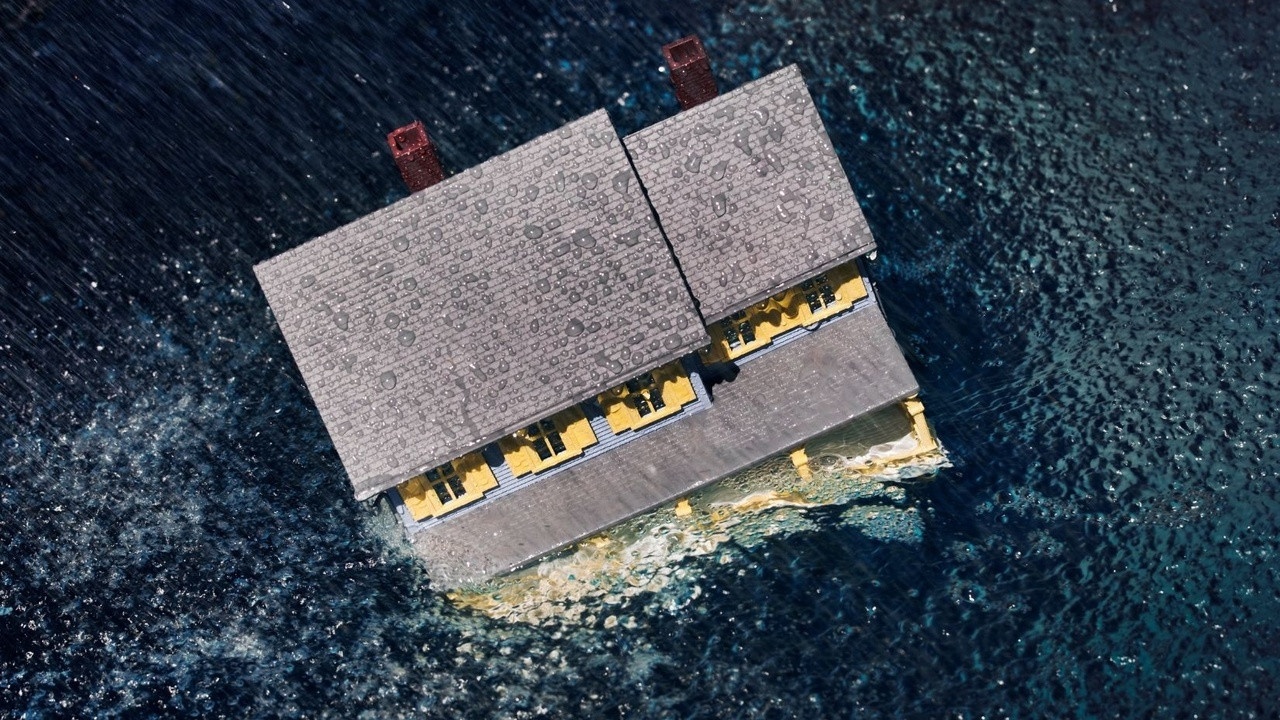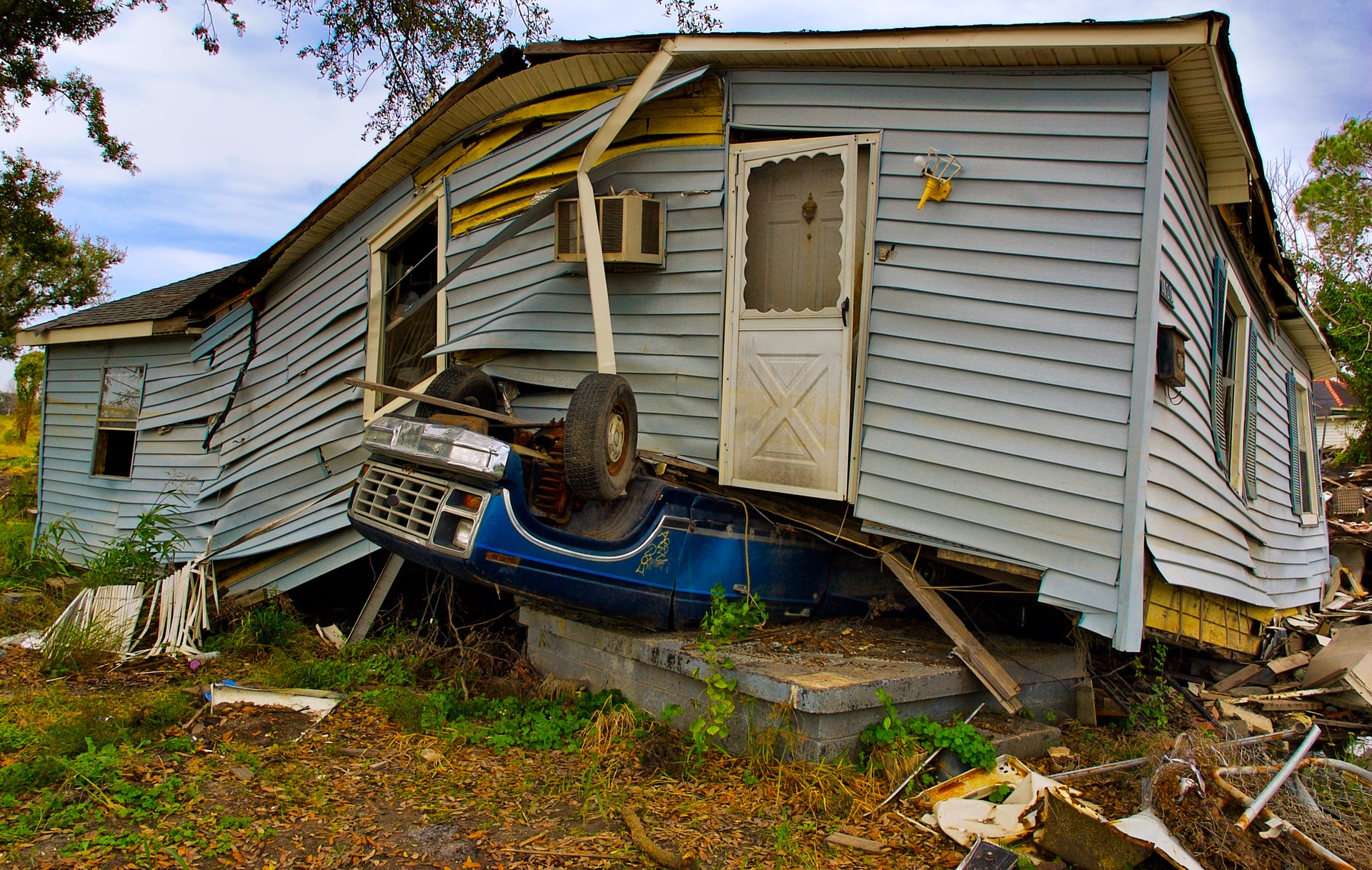What does climate resilient housing look like?

Housing is a great place to start when discussing and remediating our environmental impacts, as residential buildings, in combination with commercial buildings, are responsible for 36% of global energy use and 39% of energy-related carbon dioxide emissions annually.
The good news is that thanks to the green building movement, people are becoming more and more aware of the different ways in which we can minimize our environmental impact through design. For example, we can employ green building techniques such as rammed earth construction, passive housing, and passive solar.
However, designing for reduced environmental impact isn’t the only thing we should be considering when it comes to housing. On a global scale, humanity is experiencing the consequences of our environmental actions – climate change. We are seeing unusual and unpredictable temperatures, changing weather patterns, and more severe storms and natural disasters, as there is more energy in the atmosphere along with changes in the ocean as temperatures rise and sea ice melts.

Hurricane Ida 2021
For example, Hurricane Ida, a dangerous Category 4 hurricane with winds of 150 mph, wreaked havoc across the southern U.S. While the hurricane itself resulted in environmental destruction and power outages, the remnants of Hurricane Ida brought heavy rainfall and flooding across the upper Ohio Valley into the mid Atlantic and southern New England.
This single event caused at least $50 billion in damages, the destruction of homes, and most devastatingly, the loss of life.

In response to these detrimental events which are occurring more and more frequently, our buildings must be climate resilient as well as sustainable. Resiliency is the ability to recover quickly from disaster or difficulties. Put simply, our human-built environment must take the natural environment and all of its phenomena into account. This is key to building a safe and sustainable future.
Past applications of climate resilient housing
Now, climate resilient housing isn’t actually a new concept. People have been designing and building their homes and shelters with the climate in mind for thousands of years. It is only natural that traditional building methods and techniques around the world differ based on climatic conditions and common weather events.
The traditional Malay house is a great example of this! Traditional Malay houses, constructed by indigenous ethnic Malay people in Sumatra, Borneo, and the Malay Peninsula, were built with the local tropical climatic conditions in mind.
One of the most distinct features of the traditional Malay house is the practice of raising the house above the ground using posts. This raised floor construction is ideal in locations where there is heavy rain that often results in flash floods.
While populations and cultures that live in areas that are prone to natural disasters are familiar with climate resilient housing, it is becoming necessary for more and more residences around the world to adopt building techniques that can withstand climate change related events.
So, what exactly does climate resilient housing look like?
Climate resilient housing features will depend on the area in which you are living, as well as the climate threats you are likely to face. For example, housing located in coastal areas should be designed with hurricanes and flooding in mind, while inland areas may be more concerned with tornadoes.

On top of that, housing throughout the world should also be designed to withstand forest fires, drought, heavy rain and snowfall, power outages, and other extreme weather situations.
It is always a good idea to assess your current location in order to make the most effective renovations, add-ons, or housing purchases when it comes to climate change resiliency.
Here are the top 3 ways to make housing more climate resilient:
1. Building structure durability
Whether you are concerned about hurricanes, tornadoes, or other dangerous windstorms, having a strong home that can withstand nature’s elements is always a good idea. When it comes to new buildings, the most important thing you can do is make sure the walls of your home are built with durable construction materials which are securely reinforced.
For example, to ensure a home is resilient against high winds, you can secure the structure above the foundation walls with hurricane-resistant bolts, steel plates, or straps, to the foundation walls.
We don’t want to forget about the siding on our homes or roofing types either, as some types of siding and roof cover are much more resilient than others. For example, vinyl siding is not recommended in terms of climate resilience as it is not resistant to fire and can be easily damaged during severe weather.

Instead, brick cladding, aluminum siding, and wood composite siding might be better options. When considering roofing types, metal roofing is quite good at resisting high winds and fire, while shingles are good at resisting wind shear.
Other features to consider include impact resistant windows that are composed of glass made with laminated plastic in between the panes, storm shutters to keep wind-borne objects out, and the coating of the underside of balconies and decks with flame resistant materials.
2. Water and energy self-sufficiency
One downside of many modern buildings is that they rely so heavily on external inputs and are rarely self sufficient. Events such as power outages can end up being fatal due to lack of air conditioning or heating. Similarly, many households are left without potable water in the midst of droughts because they rely on far away water sources.
This is why it is important for climate resilient housing to have features in place that facilitate self-sufficiency. For example, passive solar allows homeowners to heat or cool their home by simply taking advantage of the sun’s incoming solar radiation.
Similarly, having solar panels installed on your home will allow for your electrical systems to work when the regular power grid is out.
Highly insulated homes such as Net Zero and Passive Solar homes will be slower to lose heat in case of a power outage during the winter months, and those with back-up heating systems such as pellet stoves or high efficiency wood burning stoves have an added advantage.

In terms of water conservation, rainwater harvesting through the use of rainwater catchment systems is a great way to ensure that potable water is available in times of emergency, and low flow fixtures will reduce the amount of water consumed in the home and the amount of wastewater added to a potentially already overloaded treatment plant.
3. Flood mitigation
As discussed in the context of the traditional Malay house, lifting houses off the ground through the use of stilts is one effective way to minimize flooding. Of course, for those of us who live in non-lifted housing, flooding can be quite a concern. Especially when you have a basement, or live in a basement apartment, as seen with the lives lost in hurricane Ida in 2021.

For one, landscaping should slope downhill from a house in order to prevent water from gathering next to the foundation. Similarly, downspouts collect rainwater from a roof and direct it away from the house to prevent flooding. It is generally a good idea for this water to drain to a point where it can be absorbed easily. For example, a rain garden, swale, or area that sends the water away from the house.
Other flood mitigation measures include installing a sump pump in the lowest part of your basement floor (the collection basin or pit called a ‘sump’). This pump will help to prevent flooding by pumping water out of basements where flooding happens often.
It is also a good idea to apply coatings and sealants to your foundation in order to help prevent flood water from leaking into your house through cracks.
New and remodeled homes can have their furnaces and electrical panels relocated to upper floors of a multistory home or apartment to prevent damage in times of flooding.

But most importantly, people in high risk areas for flash flooding need to have emergency escape plans in place to get themselves and their loved ones to high ground and safety. This is especially of concern for those with limited mobility and those with young children.
Ensure that you know what to do in case of flash flooding and what an emergency siren or alert on your phone sounds like, and have an action plan in place, based on your location.
Hopefully this look at the top 3 ways to create climate resilient housing will inspire you to think about your home – how resilient is it? What can be added to improve its resiliency? And of course, how can you take action against climate change?
Stay connected with news and updates!
Join my mailing list to receive the latest news and updates. Your information will not be shared.

